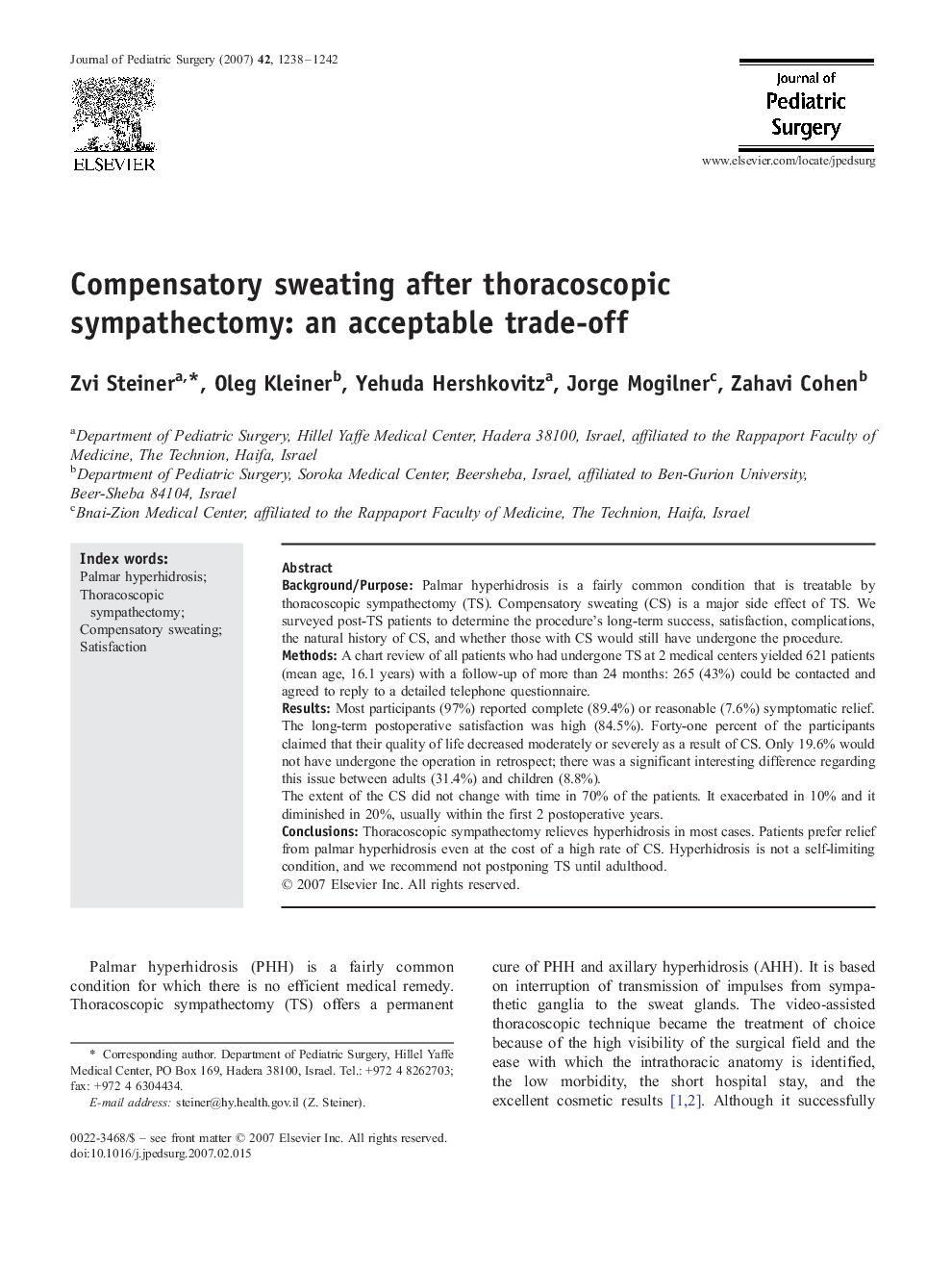| Article ID | Journal | Published Year | Pages | File Type |
|---|---|---|---|---|
| 4159270 | Journal of Pediatric Surgery | 2007 | 5 Pages |
Background/PurposePalmar hyperhidrosis is a fairly common condition that is treatable by thoracoscopic sympathectomy (TS). Compensatory sweating (CS) is a major side effect of TS. We surveyed post-TS patients to determine the procedure's long-term success, satisfaction, complications, the natural history of CS, and whether those with CS would still have undergone the procedure.MethodsA chart review of all patients who had undergone TS at 2 medical centers yielded 621 patients (mean age, 16.1 years) with a follow-up of more than 24 months: 265 (43%) could be contacted and agreed to reply to a detailed telephone questionnaire.ResultsMost participants (97%) reported complete (89.4%) or reasonable (7.6%) symptomatic relief. The long-term postoperative satisfaction was high (84.5%). Forty-one percent of the participants claimed that their quality of life decreased moderately or severely as a result of CS. Only 19.6% would not have undergone the operation in retrospect; there was a significant interesting difference regarding this issue between adults (31.4%) and children (8.8%).The extent of the CS did not change with time in 70% of the patients. It exacerbated in 10% and it diminished in 20%, usually within the first 2 postoperative years.ConclusionsThoracoscopic sympathectomy relieves hyperhidrosis in most cases. Patients prefer relief from palmar hyperhidrosis even at the cost of a high rate of CS. Hyperhidrosis is not a self-limiting condition, and we recommend not postponing TS until adulthood.
